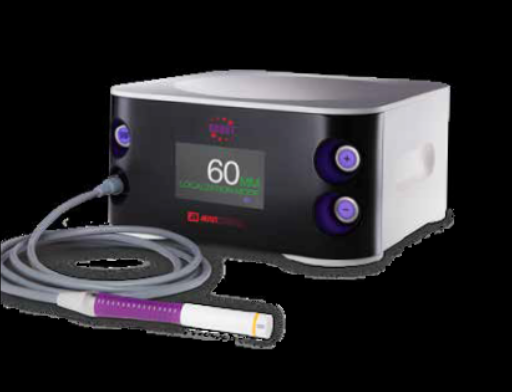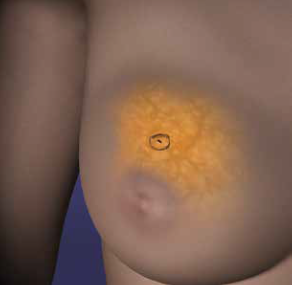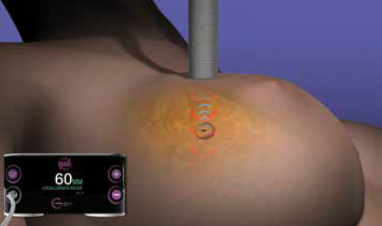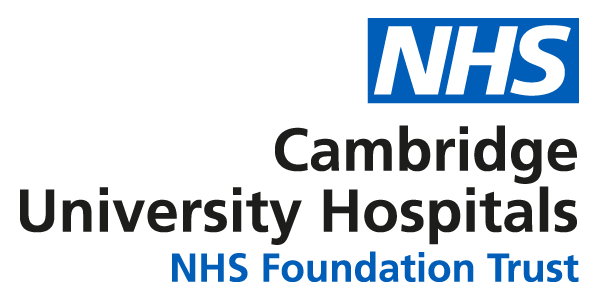
Who is the leaflet for?
This patient leaflet is for women who need to have a non palpable lesion removed from their breast and they require localisation (a way to find it) prior to removing it with an operation. This leaflet provides information on the SCOUT* wire-free radar localisation system.
Localisation techniques
Due to imaging and screening advancements, breast cancer is often identified at earlier stages. However, early detection means that lesions are typically smaller and therefore harder to locate during surgery. Studies have shown that about 50% of all lesions are “non-palpable”, which means your surgeon cannot find them by touch alone. 1,2
The traditional process is to place a wire in the tumour to guide the surgeon to the lesion during the operation. This traditional technique, called Wire Guided Localisation, is carried out over 30,000 times per year in the UK, and despite being in general use since the 1960s, it has some limitations:
The wire is usually placed on the morning of surgery by attending the radiology department.
- There is likely to be a waiting period before surgery, during which the wire will be protruding from your breast.
- You will be advised to slightly restrict your movements, so that the wire is not accidentally displaced before the tumour is removed.
- Your surgeon has to follow the wire during the operation to remove the tumour.
Many new techniques are now emerging in the UK for lesion localisation, one of which is the use of SCOUT* radar technology. This system helps increase surgeons’ ability to precisely locate tumours during surgery, which increases the probability of complete removal of the affected area. This procedure is recommended by this hospital.
How does the SCOUT* work?
SCOUT* works by placing a “reflector” (a tiny device about the size of a grain of rice) into the tumour. The system then uses safe, non-radioactive radar waves to detect the reflector’s location within the breast. The reflector is completely passive until activated in the operating room when your surgeon uses the SCOUT* system to locate and remove both the tumour and the reflector.
To make the day of surgery less complicated, you can have the reflector placed on a separate day in advance of your scheduled surgery date.
During the placement your clinician will:
- Confirm the location of the tumour using imaging (mammography or ultrasound)
- Offer you a local anaesthetic to numb the targeted area of your breast
- Introduce the reflector through a small needle under image guidance
- Confirm the placement of the reflector
You will not feel the reflector after it has been placed and you can resume normal activity.
The procedure takes around 15-30 minutes.
In SCOUT* wire-free localisation, you are not required to have two procedures on the same day. The reflector can be conveniently placed prior to your surgery date, and remains completely passive until it is used to guide surgery.

What happens during surgery?
The SCOUT* system is used to detect the location of the reflector within the breast, allowing your surgeon to plan the best path to the tumour. SCOUT* then provides real-time guidance during surgery. Finally, the system confirms that the reflector has been removed along with the targeted tissue.
The SCOUT* system uses a unique radar signal to precisely guide the surgeon to the tumour with around 1mm of accuracy.

Appointment to place the SCOUT* reflector
You will need an additional appointment to place the SCOUT* reflector prior to your surgery. This can be arranged for the same date as any other of your pre-operative appointments at the hospital.
Benefits
- The ability to place the reflector on a separate day can simplify your day of surgery, increasing convenience and lessening anxiety.
- The SCOUT* reflector is not externally visible after placement and will not restrict your daily activities.
- It may minimise your wait time on the day of surgery.
- SCOUT* provides guidance for precise tumour localisation. Your surgeon is able to plan the incision during surgery, which may allow for less tissue removal. This can result in better cosmetic results.
Risks
- Some discomfort may be experienced when placing the reflector, although this is similar to that experienced with a wire placement. A local anaesthetic can be given to minimise this.
- Possible complications are similar to those of a biopsy. These include pain, bleeding, infection and inflammation.
- As with every breast localisation technique, there is a minimal risk of being unable to localise the lesion accurately. This will be identified prior to the operation and an alternative method will be proposed. The reflector will be removed during the operation.
Contacts/further information
If you have any questions or need any further information, please contact the Cambridge Breast Unit on telephone number: 01223 217627. We will do our best to help.
References/sources of evidence
This content is not intended nor recommended as a substitute for medical advice, diagnosis or treatment. Always seek the advice of a qualified physician regarding any medical questions or conditions. ©2020 Merit Medical Systems, Inc. All rights reserved.
1. Morrow M, et al. Surgical Margins in Lumpectomy for Breast Cancer - Bigger is Not Better. N Engl J Med. 2012.
2. Data on file, Cianna Medical, Inc.
3. National Breast Cancer Foundation, 2019 (opens in a new tab).
4. Cox C et al. A Prospective Single Arm, Multi-Site Clinical Evaluation of a Nonradioactive Surgical Guidance Technology for the Localization of Non-Palpable Breast Lesions during Excision. Ann SurgOncol 2016 Oct; 23 (10):3168-74.
We are smoke-free
Smoking is not allowed anywhere on the hospital campus. For advice and support in quitting, contact your GP or the free NHS stop smoking helpline on 0800 169 0 169.
Other formats
Help accessing this information in other formats is available. To find out more about the services we provide, please visit our patient information help page (see link below) or telephone 01223 256998. www.cuh.nhs.uk/contact-us/accessible-information/
Contact us
Cambridge University Hospitals
NHS Foundation Trust
Hills Road, Cambridge
CB2 0QQ
Telephone +44 (0)1223 245151
https://www.cuh.nhs.uk/contact-us/contact-enquiries/

